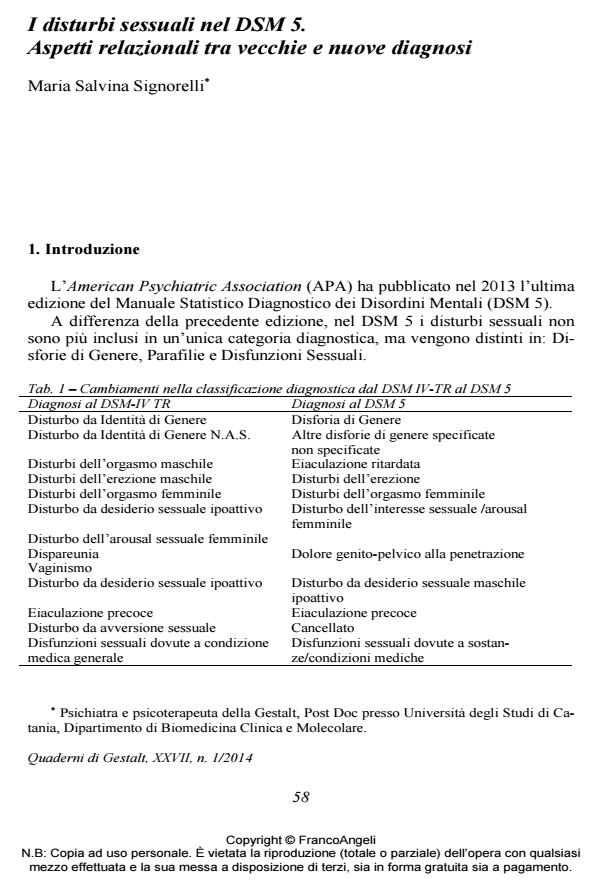Sexual disorders in DSM 5: the importance of relational aspects between old and new diagnosis
Journal title QUADERNI DI GESTALT
Author/s Maria Salvina Signorelli
Publishing Year 2014 Issue 2014/1
Language Italian Pages 7 P. 58-64 File size 78 KB
DOI 10.3280/GEST2014-001006
DOI is like a bar code for intellectual property: to have more infomation
click here
Below, you can see the article first page
If you want to buy this article in PDF format, you can do it, following the instructions to buy download credits

FrancoAngeli is member of Publishers International Linking Association, Inc (PILA), a not-for-profit association which run the CrossRef service enabling links to and from online scholarly content.
This paper analyzes the changes in the diagnostic classification of sexual disorders in the transition from DSM IV-TR to DSM 5. In addition to discussing nosological questions, the article points out the importance of the relational aspect of these disorders.
Keywords: Sexual dysfunction, pharafilia, gender dysphoria, DSM 5, anxiety
- Psychotraumatology of Images in Gender Dysphoria Salvatore Settineri, Fabio Frisone, Emanuele Maria Merlo, in The Open Psychology Journal /2018 pp.222
DOI: 10.2174/1874350101811010222
Maria Salvina Signorelli, I disturbi sessuali nel DSM 5. Aspetti relazionali tra vecchie e nuove diagnosi in "QUADERNI DI GESTALT" 1/2014, pp 58-64, DOI: 10.3280/GEST2014-001006